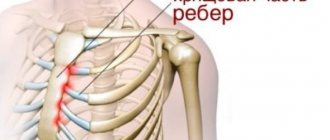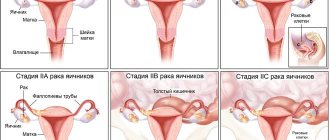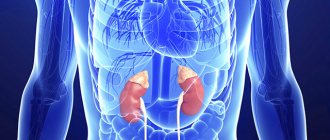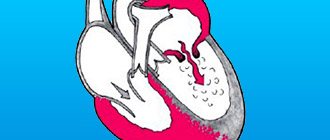Treatment of asthenia cannot be considered a simple process. Despite its apparent simplicity, this disorder of the nervous system often leads to very serious complications. The most effective in the treatment of asthenia is the use of individual comprehensive programs using neurometabolic therapy, psychocorrection and methods of restorative therapy of the nervous system by a psychotherapist and neurologist. Perhaps, in some cases, the use of mild hypnotic techniques.
Brain Clinic specialists have extensive experience in treating asthenia of various origins; they can safely restore the functioning of the brain and nervous system without any side or negative effects on the body.
Call and make an appointment! Our treatment for asthenia helps even with the most severe cases, when other treatment has not helped!
| Initial consultation and examination 2,500 | Treatment and rehabilitation therapy from 5000 |
In practice, you often come across different interpretations of astheno-neurotic syndrome. The combined symptoms of asthenia and neurotic symptoms are more common, so in such cases, astheno-neurotic syndrome should be noted; in the early stages of the formation of asthenic syndrome, people rarely go to the doctor, so doctors encounter asthenia “in its pure” form very rarely.
Reasons for the development of asthenia
As a result of research, it was found that asthenia can be caused by many social factors. Namely, such factors include various life difficulties and circumstances, frequent stress, and chronic diseases. All these problems affect not only a person’s psychological health, but sooner or later lead to asthenia.
It is worth noting that asthenia, on the one hand, is a trigger for the development of many diseases, and on the other hand, it can be one of their manifestations. In particular, symptoms of asthenia are observed with traumatic brain injuries, degenerative and infectious processes in the brain, and impaired blood circulation in the brain.
Asthenia is based on nervous exhaustion, which can appear due to a long illness, strong emotions, or depression. The trigger for the development of pathology is nutritional deficiency, metabolic disorders, and excessive energy consumption.
Prevention and prognosis
Asthenopia in the stage of compensation and subcompensation usually has a favorable prognosis. If we are talking about decompensated asthenopia, then in this case even long-term and effective therapy cannot guarantee a complete cure. Therefore, it is so important to consult a doctor in time at the slightest discomfort in the eyes after prolonged strain.
The following can be recommended as preventative measures for eye health:
- Pay attention to the lighting of your workplace. It is better if it is natural, but if there is no window near the workplace, you should install a lamp with a bulb no brighter than 60 W, since too bright light also negatively affects the eyes.
- It is necessary to learn to alternate work associated with visual tension and rest for the eyes.
- If you have symptoms of eye fatigue, you need to take special vitamin complexes.
- Start taking vitamin therapy in advance, when there are no signs of eye disease. In this case, asthenopia will not begin to develop, even if constant eye strain is the main provoking factor.
- It is worth doing simple eye exercises several times a day. These are frequent blinks for a minute, tightly closed eyes followed by opening of the eyelids, eye movements in a circle, vertically, horizontally. Just 10-15 minutes a day of such exercises will help maintain eye health.
Asthenopia is different in that it can develop very slowly and manifests itself with almost imperceptible signs. A person simply does not pay attention to the alarming symptoms and gradually gets used to vision deviations, not even noticing that it continues to worsen. It is better not to take risks and, if you have the slightest vision problems, consult an ophthalmologist to avoid complications.
Author of the article: Bakhareva Elena Sergeevna, specialist for the website glazalik.ru Share your experience and opinion in the comments.
Classification of asthenia
According to the International Classification of Diseases, asthenia syndrome belongs to the class of neurotic diseases. In clinical practice, it is customary to distinguish the following variants of the disease:
- asthenia, which is considered as a symptom of endocrine, somatic, mental, infectious and other diseases;
- asthenia caused by mental and physical overload, which is considered a secondary pathology, since you can get rid of it after eliminating its cause;
- chronic fatigue syndrome, which is accompanied by weakness and frequent fatigue.
The classification of asthenia also distinguishes the following clinical forms: somatogenic (organic, secondary or symptomatic) and psychogenic (primary, functional or nuclear). There are also reactive and chronic forms of the disease.
In most cases, the organic form of the disease is diagnosed after somatic and infectious diseases, degenerative changes that have occurred in the brain, as well as injuries. This type of disease develops in more than 45% of all cases.
Functional asthenia is a reversible condition that occurs as a protective reaction to depression, stress, and excessive physical or mental stress. The psychiatric form of functional asthenia occurs as a result of insomnia, anxiety or depression. The acute form is considered the result of stress and overload at work. The chronic form of asthenia occurs due to a sharp weight loss in the postpartum period, after suffering an infectious disease.
A little about asthenopia
Asthenopia is a whole complex of subjective signs of eye fatigue that manifest themselves with increased load on the organs of vision, especially in low light conditions. The reason may be incorrectly selected eye optics.
Asthenopic changes are often temporary and intensify during intense eye work. During the rest period, they weaken or may disappear completely.
The causes of the disease are:
- incorrectly selected corrective optics for the eyes;
- reading in the dark;
- continuous work at the computer, smartphone;
- lack of preventive measures to strengthen the eye muscles and blood vessels.
The manifestation of asthenopia is facilitated by constant eye strain on a nearby object.
Clinical manifestations of asthenia
The clinical picture of asthenia is very diverse, which is due to several factors. Symptoms of asthenia depend on what disorder is at its basis. The mildest form of pathology is considered to be asthenia with hypersthenia, which is manifested by impatience, hot temper, and a feeling of internal tension.
Asthenia with irritability syndrome is characterized by two main symptoms - fatigue and a feeling of irritation. The most severe form of asthenia is considered hyposthenic, which is characterized by a feeling of powerlessness and severe fatigue. Patients often experience an increase in the depth of asthenic disorders, which ultimately leads to a change from a mild form of the disease to a more severe one.
In most cases, symptoms of pathology are completely absent or very mild in the morning. However, in the afternoon and especially towards the evening they gradually grow and intensify. It is believed that one of the most characteristic signs of pathology is normal health in the morning and its deterioration in the late afternoon.
Doctors also pay attention to the fact that the symptoms of the disease depend not only on the depth of the accompanying disorders, but also on the etiological factor and constitutional characteristics of the patient. Sometimes the opposite effect is observed, when the gradual development of asthenia leads to an increase in the patient’s characterological traits. To a greater extent, this is typical for patients prone to asthenic reactions.
- Increased fatigue
- Mental imbalance
- Autonomic disorders
- Sleep disorder
One of the most characteristic symptoms of asthenia is increased fatigue, which is always accompanied by a decrease in productivity (especially with excessive intellectual stress). At the same time, patients complain of forgetfulness, poor intelligence, weakened concentration, and therefore it becomes quite difficult for them to concentrate on something. At such moments, patients try to force themselves to think about one thing, but completely involuntarily completely different thoughts appear in their heads.
During episodes of asthenia, it becomes difficult for patients to formulate their thoughts, they cannot choose the right words for this, they complain of inability. Unfortunately, in such situations, a short rest may improve the general condition for a short time. Some people, instead of resting, try to use willpower to force themselves to do work. Moreover, the work begins to seem incredibly difficult and even overwhelming. As a result, a feeling of tension and uncertainty in one's own intellectual capabilities inevitably arises.
Patients with asthenia often lose self-control, which is accompanied by short temper, irritability, grumpiness, quarrelsomeness and pickiness. At the same time, the mood of patients changes very often. For a patient to feel depressed and anxious, a completely insignificant reason is enough. Sensitivity increases; both joyful and sad events cause tears in the patient. This condition is almost always accompanied by sensitivity to sounds and bright light.
Asthenia is almost always accompanied by severe autonomic disorders. Most often, patients are diagnosed with disorders of the cardiovascular system: tachycardia, pressure fluctuations, pulse lability, painful or unpleasant sensations in the heart area, a feeling of heat when the temperature rises, increased sweating, chilliness. In some cases, asthenia is accompanied by loss of appetite, spastic constipation and pain in the intestines. Many patients also complain of headaches and heaviness in the head.
Early signs of asthenia include difficulty falling asleep, waking up in the middle of the night, anxious dreams, early awakenings, and difficulty falling back asleep. Typically, patients do not feel rested after waking up. If asthenia worsens over time, patients feel very sleepy during the day after mental or physical stress.
Symptoms of the disease
The clinical picture of asthenic disorder is diverse. Patients often complain of:
- Constant fatigue that does not disappear after proper rest and sleep.
- Weakness, increased fatigue.
- Lethargy, feeling of exhaustion.
- Permanent feeling of drowsiness.
- Sleep disorders: difficulty falling asleep, shallow sleep. After awakening, strength in asthenic syndrome is not restored, unlike ordinary fatigue, there is no feeling of vigor and energy.
- Increased anxiety.
- Labile mood (characterized by sudden changes).
- Emotional instability: tearfulness, episodes of irresistible aggression.
Diagnosis of asthenia
Diagnosis of asthenia often does not cause any difficulties for the doctor, since it is accompanied by severe symptoms. The easiest way is to identify asthenia caused by illness, injury or stress. However, if asthenia appears against the background of another disease, then its main symptoms usually fade into the background and it becomes more difficult to diagnose it.
During the interview with the patient, the doctor collects detailed information about his well-being, sleep state, episodes of fatigue and irritability, and attitude towards work. However, it is worth remembering that sometimes patients may exaggerate the intensity of symptoms of the disease. In such cases, the neurologist must, in addition to a neurological examination, assess the emotional state of the patient and conduct a study of his mnestic sphere.
In most cases, asthenia occurs due to the development of the patient’s underlying disease. It is extremely important to determine which disease triggered the development of asthenia. To do this, a neurologist can prescribe consultations with a cardiologist, gastroenterologist, gynecologist, nephrologist, pulmonologist, infectious disease specialist, oncologist, traumatologist, endocrinologist.
Diagnosis of asthenia also involves laboratory tests:
- urine and blood analysis;
- determination of blood sugar levels;
- coprogram;
- blood chemistry.
PCR diagnostics and bacteriological examination are also carried out. According to indications, the neurologist may also prescribe instrumental studies:
- gastroscopy;
- Ultrasound of the abdominal organs;
- ECG;
- duodenal intubation;
- Ultrasound of the heart;
- X-ray or fluorography of the lungs;
- Brain MRI;
- Ultrasound of the kidneys;
- Ultrasound of the pelvic organs.
Neurocirculatory disorder
A neurocirculatory disorder that occurs against the background of dysfunction of the autonomic system is characterized by multiple symptoms. Each sign of a pathological disorder is combined into several syndromes:
- Cardiac. Diagnosed on average in 90% of patients with this disease. The development of cardiac syndrome is accompanied by pain that is localized in the chest. In this case, the appearance of the symptom is not associated with dysfunction of the heart muscle.
- Sympathicotonic. This syndrome is characterized by the presence of tachycardia, surges in blood pressure, pale skin and motor agitation.
- Vagotonic. Characterized by a weak heartbeat. With vagotonic syndrome, low blood pressure is observed, which provokes headaches, dizziness, hyperhidrosis, and intestinal upset.
- Mental. The syndrome manifests itself in the form of unreasonable attacks of fear and mood swings.
- Asthenic. Patients with this syndrome react acutely to changing weather conditions and get tired quickly.
- Respiratory. Patients experience difficulty breathing (feeling short of air).
Neurocircular asthenia is characterized by the appearance of several syndromes simultaneously.
Treatment of asthenia
The main goals of asthenia therapy will be to improve the patient’s quality of life, increase his level of activity and productivity, and reduce the manifestation of asthenia and its accompanying symptoms. Therapy depends on the clinical manifestations and etiology of the disease. If asthenia is secondary, the underlying disease must initially be treated. In the case of reactive asthenia, medical tactics should be aimed at correcting the factors that led to the breakdown.
If the causes of asthenia are stress, physical or psycho-emotional fatigue, the doctor may advise normalizing sleep and wakefulness, work and rest. Therapy of primary asthenia involves an integrated approach: psychotherapeutic techniques, physical training, drug therapy.
Asthenic syndrome in children
Symptoms of asthenia in children appear almost the same as in adults. However, if asthenic syndrome develops in children, parents may not immediately recognize what it is.
Asthenia is often preceded by severe and repeated respiratory illnesses. In addition, asthenic syndrome can be a consequence of mental disorder and psychosomatic pathologies, emotional stress. Asthenia in children is also called asthenic neurosis .
Treatment of this condition in children requires joint supervision of a number of specialists - a neurologist, psychiatrist, psychologist, pediatrician. It is very important to eliminate the factors that provoked this condition in the child. Drug therapy is practiced strictly according to the regimen prescribed by the doctor. The drugs are used taking into account the age of the child and in minimal doses.
In addition, it is necessary to provide the child with adequate sleep and adequate rest. Regular physical activity is a must. Another important factor is a healthy diet that provides the body with the full range of necessary substances. The psychological characteristics of children with asthenic syndrome should also be taken into account. It is very important to maintain their high self-esteem, so such a child should be praised more often, even for small successes.
Non-drug therapy
One of the highest priority methods of treating asthenia is physical activity. It has been proven that dosed physical training therapy in combination with educational programs helps improve the patient’s well-being. Hydrotherapy has also proven its effectiveness: Charcot's shower, swimming, contrast shower. According to the doctor's indications, massage, gymnastics, physiotherapy, and acupuncture may also be prescribed.
Psychotherapeutic approaches are actively used in the treatment of asthenia. For example, symptomatic psychotherapy is aimed at improving the patient’s general health and eliminating feelings of fatigue and anxiety. This approach includes hypnosis, self-hypnosis, auto-training, and suggestion. Effective methods of treating asthenia also include person-oriented psychotherapy.
Drug therapy
The issue of using medications to treat asthenia is still controversial. Research has proven that doctors are currently actively using about 40 different remedies to eliminate the pathological condition. The list includes medications from a wide variety of drug groups:
- psychostimulants;
- psychotropic (mainly antidepressants);
- anti-infective;
- immunostimulating;
- general strengthening;
- nutritional supplements;
- vitamin preparations.
The key drugs for the treatment of asthenia are considered to be antidepressants, the mechanism of action of which is aimed at increasing the metabolism of monoamines in the brain. For the treatment of asthenia, it is customary to use the following antidepressants: herbal derivatives, reversible MAO inhibitors, four-cyclic and atypical blood pressure, tricyclic blood pressure.
If asthenia is accompanied by panic disorders, sleep disorders, anxiety, tension, the patient may be prescribed tranquilizers or mild sedatives of plant origin. The combination of asthenia with phobic, hysterical, hypochondriacal manifestations requires the prescription of antidepressants with antipsychotics.
Many patients tolerate medications that affect the central nervous system very poorly. This is why doctors recommend starting treatment with low doses. Nonspecific drug therapy is also indicated, which includes drugs that have an anti-stress effect, have antioxidant properties, and improve energy processes. The administration of vitamin complexes (especially B vitamins, vitamin C), macro- and microminerals (magnesium and calcium) is also considered justified.
Diet
Diet for the nervous system
- Efficacy: therapeutic effect after 2 months
- Timing: constantly
- Cost of food: 1700-1800 rubles per week
Nutrition for asthenia must be complete and varied so that the body receives all the components it needs. It is recommended to eat small meals - 5-6 times a day.
To improve brain activity, it is important to provide the body with the maximum amount of amino acids that help improve brain detail. To do this, it is recommended to include liver, beef, poultry, fish, dairy products, eggs and seafood in the diet. Cereals, seeds, nuts, berries and fruits, and fresh herbs are healthy. For dessert, chocolate, honey, and dried fruits are recommended.
Green tea, decoction of ginkgo biloba leaves, and mint tea are recommended as drinks.
If you have asthenia, it is recommended to exclude the following products from the menu:
- Fried foods.
- Low-fat food.
- Fast food and semi-finished products.
- Spreads.
- Canned food.
- Soda, confectionery.
- Caffeinated drinks (coffee, tea), alcohol.










